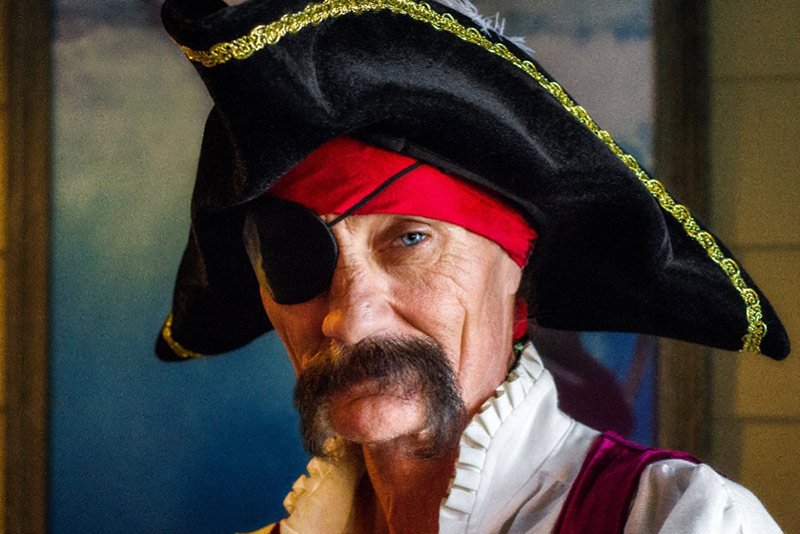By Linda Conlin, Pro to Pro Managing Editor

It’s the time of year for all sorts of festivals, and especially in coastal areas, many feature pirates. Among pirate actors, it’s not unusual to notice eye patches as part of their costumes. How did eye patches become synonymous with pirates? Safety glasses hadn’t been invented yet, so it’s easy to guess that life around swords, guns, hooks, and knives could result in serious eye injury. But there’s at least one other theory – light adaptation.
On a ship deck during the day in the 1700’s, there were no sunglasses and sailors were exposed to bright sunlight and light reflected off the water in photopic vision using cone cells. Below deck, there was very little light, where scotopic vision had to take over, using rod cells. The rods have poor acuity and are slow to respond, providing poor input to reaction time. Furthermore, achieving the best vision in scotopic light levels requires adapting for at least twenty minutes, a time frame that couldn’t be afforded during battle or emergencies on a ship. It's much faster for eyes to adapt to bright light than to adjust for the darkness. Cones attain maximum sensitivity in five to seven minutes, as compared to twenty minutes or more for rods.
A common hypothesis is that by wearing an eye patch, pirates could have one eye adapted to dark that could be uncovered below deck, allowing them to act quickly. In fact, the FAA Fitness for Flight pamphlet for pilots recommends that “Dark adaptation is impaired by exposure to cabin pressure altitudes above 5,000 feet … Since any degree of dark adaptation is lost within a few seconds of viewing a bright light, a pilot should close one eye when using a light to preserve some degree of night vision.“ However for pirates, using only one eye both above and below deck could result in visual fatigue of the uncovered eye, loss of some peripheral vision, and interfere with depth perception, which would affect balance and performance.
Because there are no historical or archeological records that support the light adaptation hypothesis, it’s uncertain that eye patches were used for that purpose. Neither are the records of their use by other sailors of the time who would have the same adaptation needs. What’s also unknown is how common the practice was. So, while it makes some sense from the perspective of eyes, and vision, it’s unlikely that we’ll ever know the truth from the myth.










